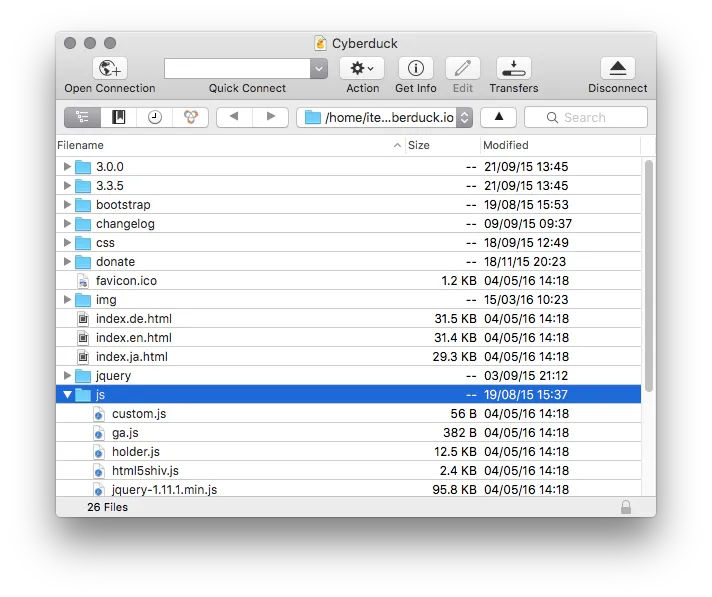Cyberduck vs Tokie: Understanding Your Remote File-Management Options

1 | Why This Comparison?
Remote work often forces freelancers or anyone to juggle local project folders, cloud drives, and server uploads. Two very different tools help bridge those gaps:
- Cyberduck – a veteran FTP/SFTP/WebDAV + cloud-storage browser.
- Tokie – a newer desktop app that turns folders into interactive documents, databases, and mini-browsers.
This article is not a “which-is-better” shoot-out. Instead, it highlights the differences so you can spot the right fit—or run them side by side.
2 | Product Snapshots (at a glance)
| Aspect | Cyberduck | Tokie |
|---|---|---|
| Core purpose | Connect Mac/Windows to FTP, SFTP, WebDAV, Amazon S3, Google Drive, Azure, Dropbox, more | Re-imagine local folders as docs & databases with inline previews, custom fields, and side-peek web views |
| Typical action | Drag-and-drop files between desktop & remote servers/cloud buckets | Organize, tag, preview, and even run mini-apps inside the folder |
| Pricing | Donationware (free), or purchase via Mac App Store/Windows Store to remove “donate” prompts | Freemium; local-first (one-time license for full features) |
| Offline use | Needs network for remote transfers; local cache only | Works entirely offline (local files), no sign-in required |
| Encryption | Client-side vaults built on Cryptomator | Local storage; OS-level file encryption / upcoming field-level encryption |
| Platforms | macOS · Windows | macOS · Windows (beta) |
3 | Deep Dive: Cyberduck
- Protocol versatility – Upload or download via FTP, SFTP, and WebDAV plus direct connectors for S3, Backblaze B2, Azure Blob, and more.
- Cross-platform – Native builds for cyberduck mac and Windows; available on the Mac App Store for a one-click cyberduck download mac experience.
- Bookmark-driven UI – Quick-connect panels keep frequently used servers one click away, useful when you hop among freelance clients.
- Cryptomator vaults – Optional client-side encryption so even third-party cloud providers see only ciphertext.
- Cost – Free to use; donating or App-Store purchase suppresses nag screens.

Best suited for: Freelancers who routinely push builds to web hosts, exchange assets via SFTP, or manage multiple cloud buckets.
4 | Deep Dive: Tokie
- Folder-as-workspace – Inline Markdown, PDF, code previews, plus the ability to embed Google Docs or dashboards in a side-peek pane.
- Custom fields – Tag files with statuses, due dates, or any metadata—turning a plain folder into a lightweight database.
- Local-first & offline – No server dependency unless using remote drives; ideal when working on a plane or a slow coffee-shop network.
- Mini-browser – Spin up widgets or view websites next to your assets, handy for creative briefs or live style-guides.
- Pricing – Lifetime license; everything runs on-device so no monthly storage bills.

Best suited for: Creatives and solo builders who organise large local projects and want Notion-style flexibility without leaving the file manager.
5 | Key Differences (and why they matter)
Network focus vs. workspace focus
Cyberduck excels at moving files between machines and clouds. Tokie excels at working with files once they’re on your machine.Real-time remote access
If your workflow demands constant cyberduck ftp client sessions to staging servers, Tokie won’t replace that transport layer.Data model
Tokie’s custom-field database model lets you query “all images tagged approved this week.”Security posture
Cyberduck’s client-side encryption guards remote data. Tokie relies on OS-level encryption but never sends files off-device unless you pair it with sync tools.
6 | When to Choose Each Tool
Pick Cyberduck if you…
- Need a cyberduck remote file manager to shuttle assets to multiple clients’ servers daily.
- Want a single GUI that speaks FTP/SFTP/WebDAV/S3 without extra plugins.
- Prefer an open-source, donation-based model.
Pick Tokie if you…
- Spend more time organising and editing local files than transferring them.
- Crave Notion-like databases but must stay offline or keep data on-prem.
- Want embedded websites/widgets at a glance while browsing a folder.

Use both together if you…
- Pull project files down with Cyberduck.
- Organise & annotate them inside Tokie.
- Push final deliverables back via Cyberduck.
This pairing covers both transport and workspace without forcing you into one monolithic solution.
7 | Alternatives & Next Steps
If you’re shopping around, you might also test cyberduck vs filezilla or GUI tools like Transmit. But if you’re simply deciding how to structure a remote-friendly workflow in 2025:
- Try Cyberduck first if server transfers are your bottleneck.
- Try Tokie first if local project sprawl is your bigger pain.
Either way, both apps fill different lanes—view them as complementary tools in your freelance toolkit rather than direct rivals.
Download Tokie today with a free 14-day trial and see how it can reshape the way you use files and folders.
Happy file wrangling!
Ready to try Tokie?
Transform your file management experience with Tokie's powerful features.